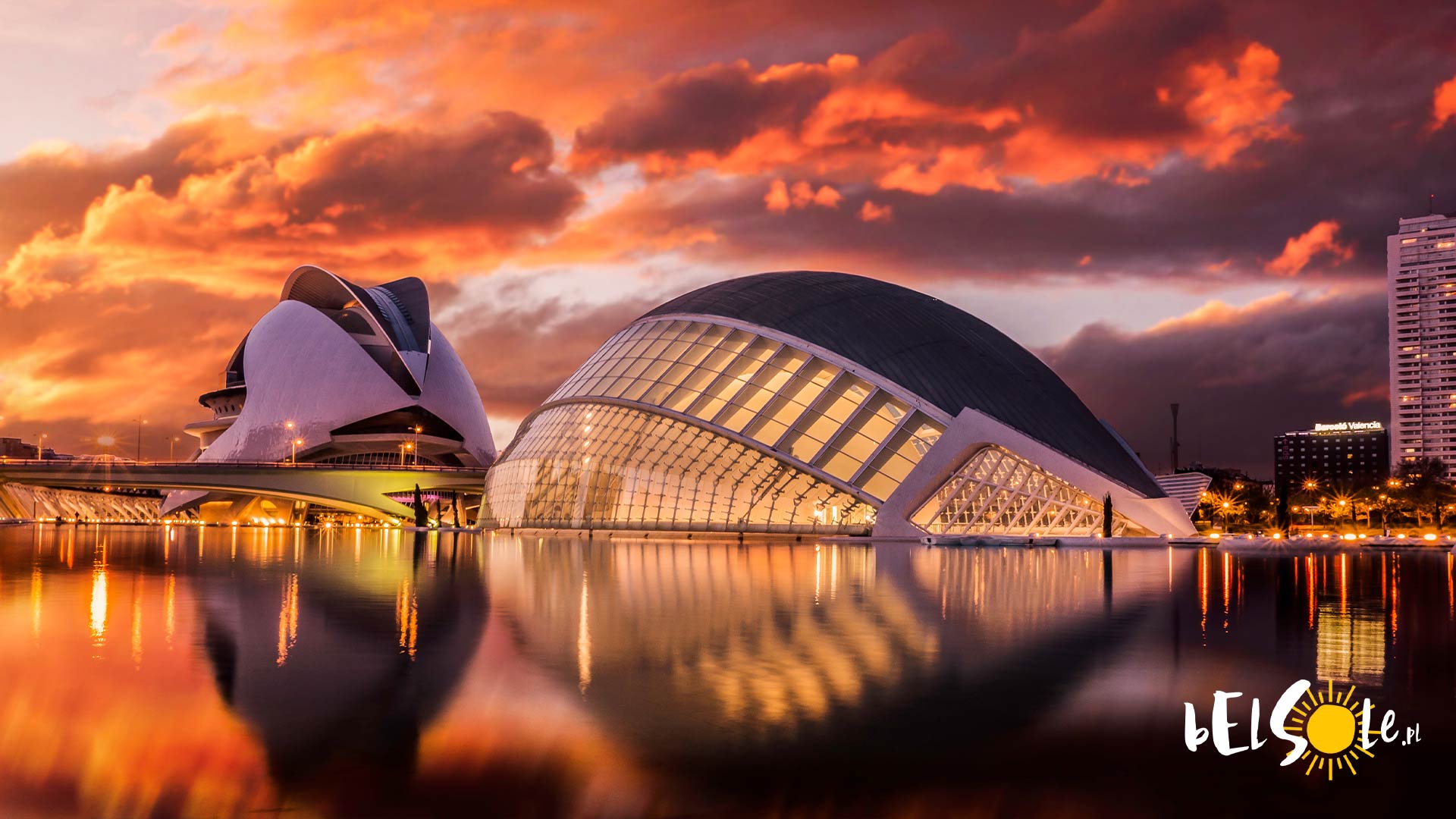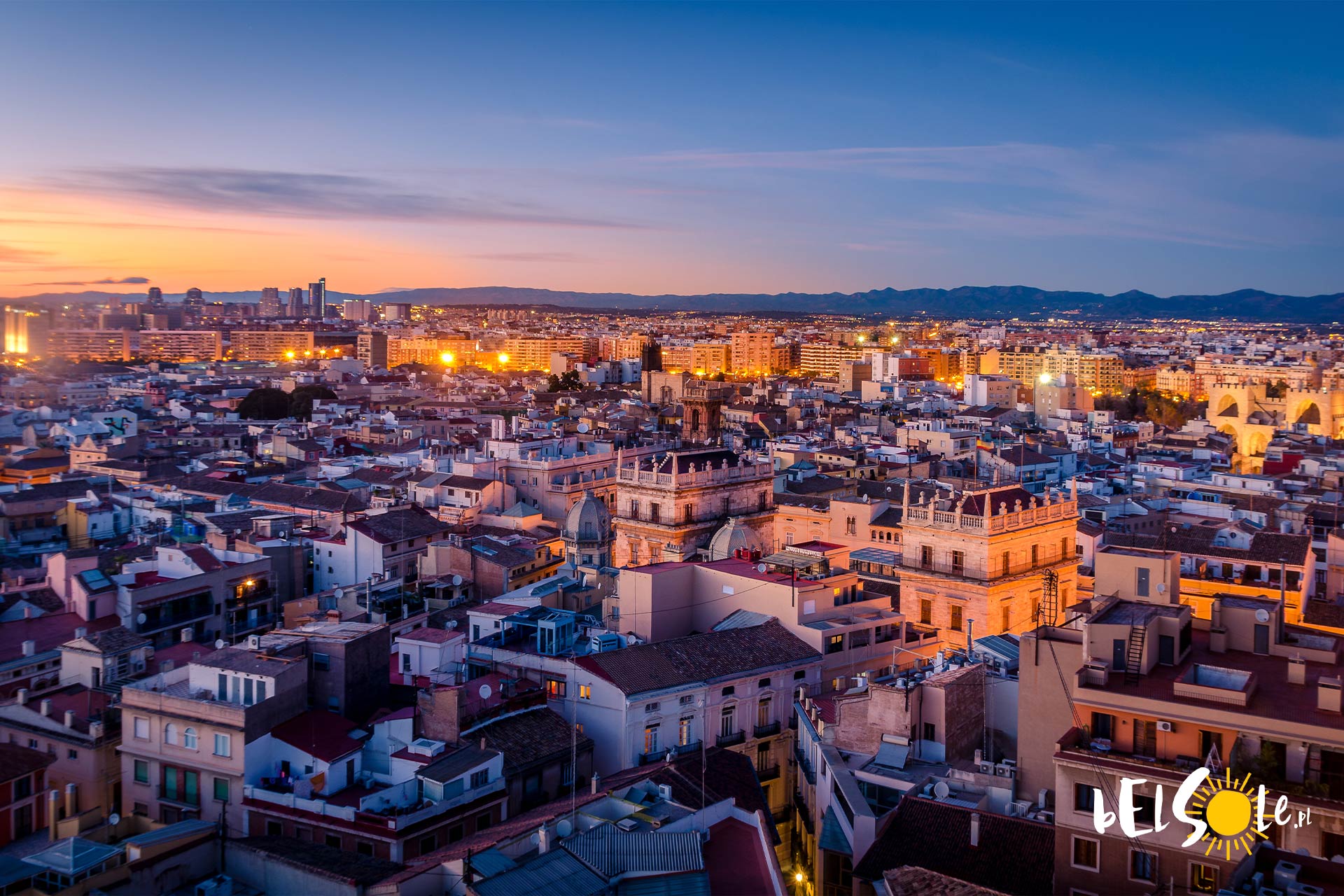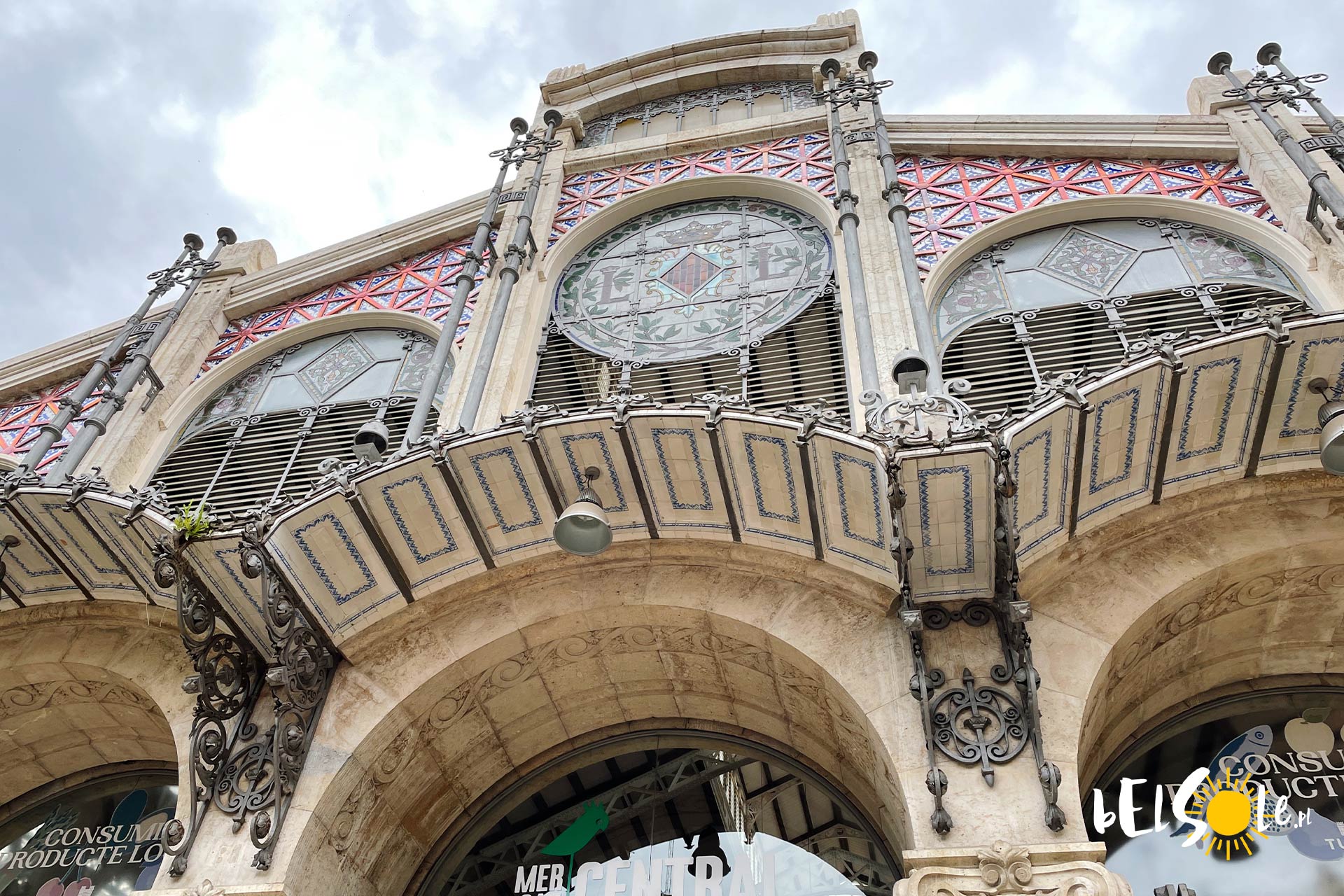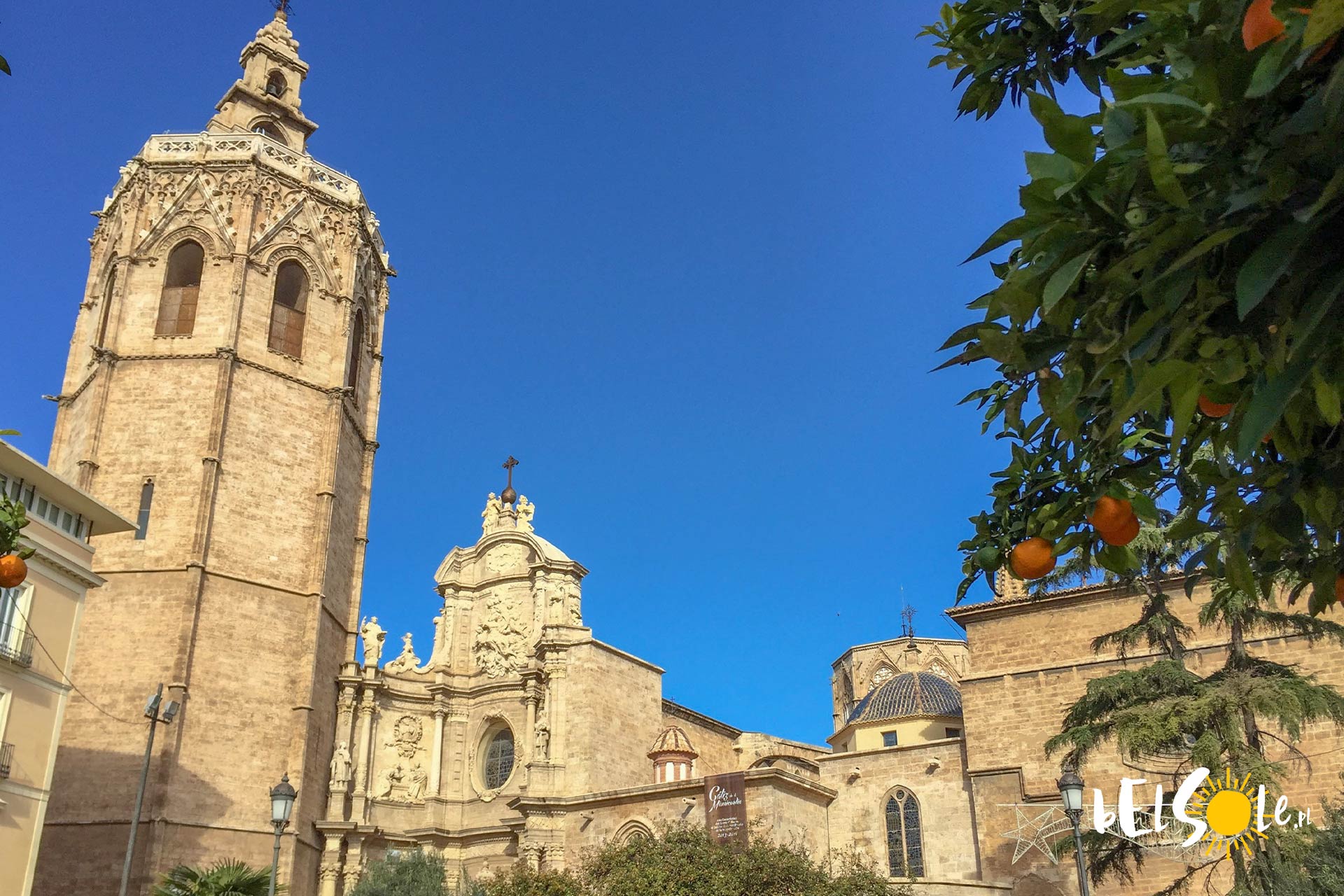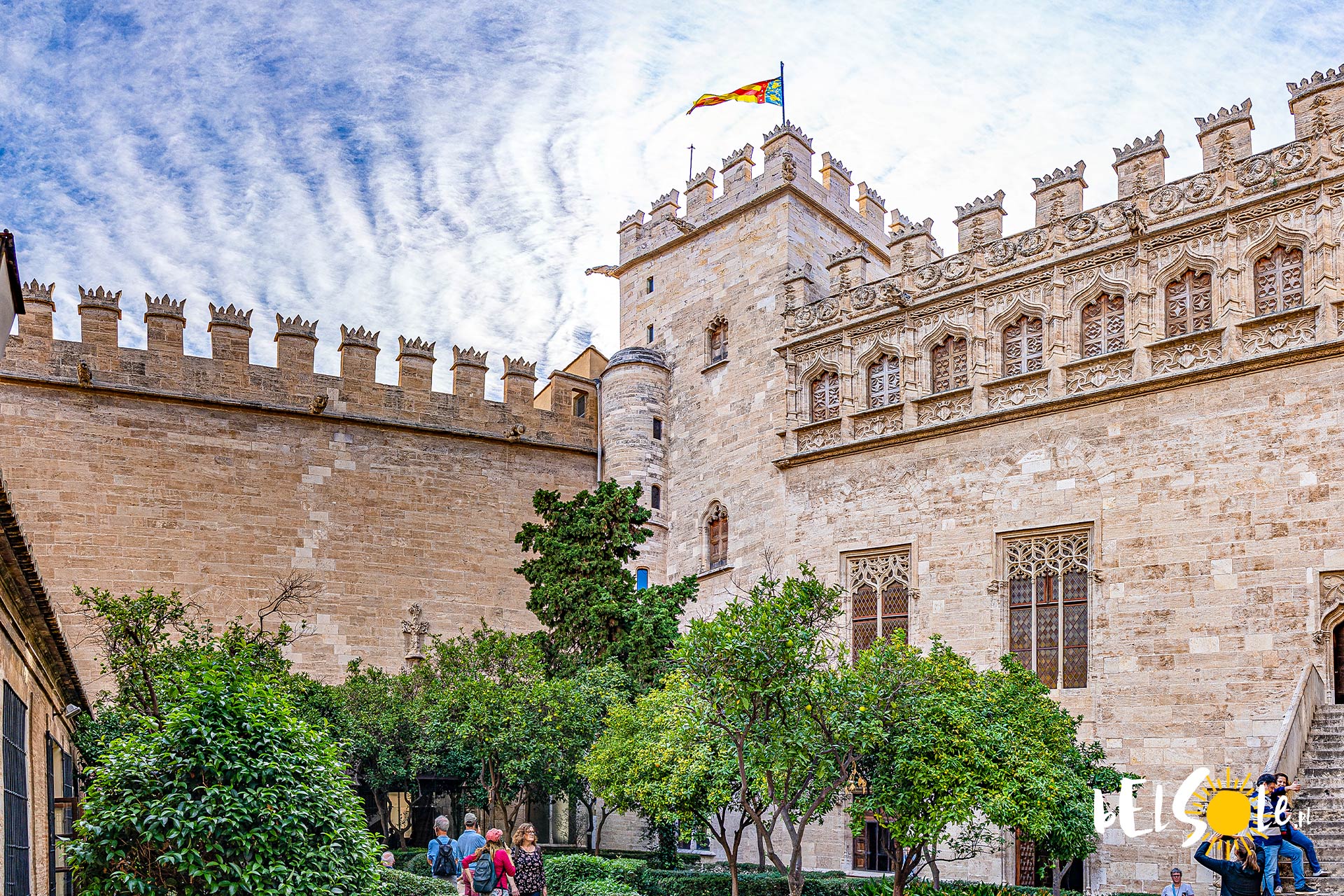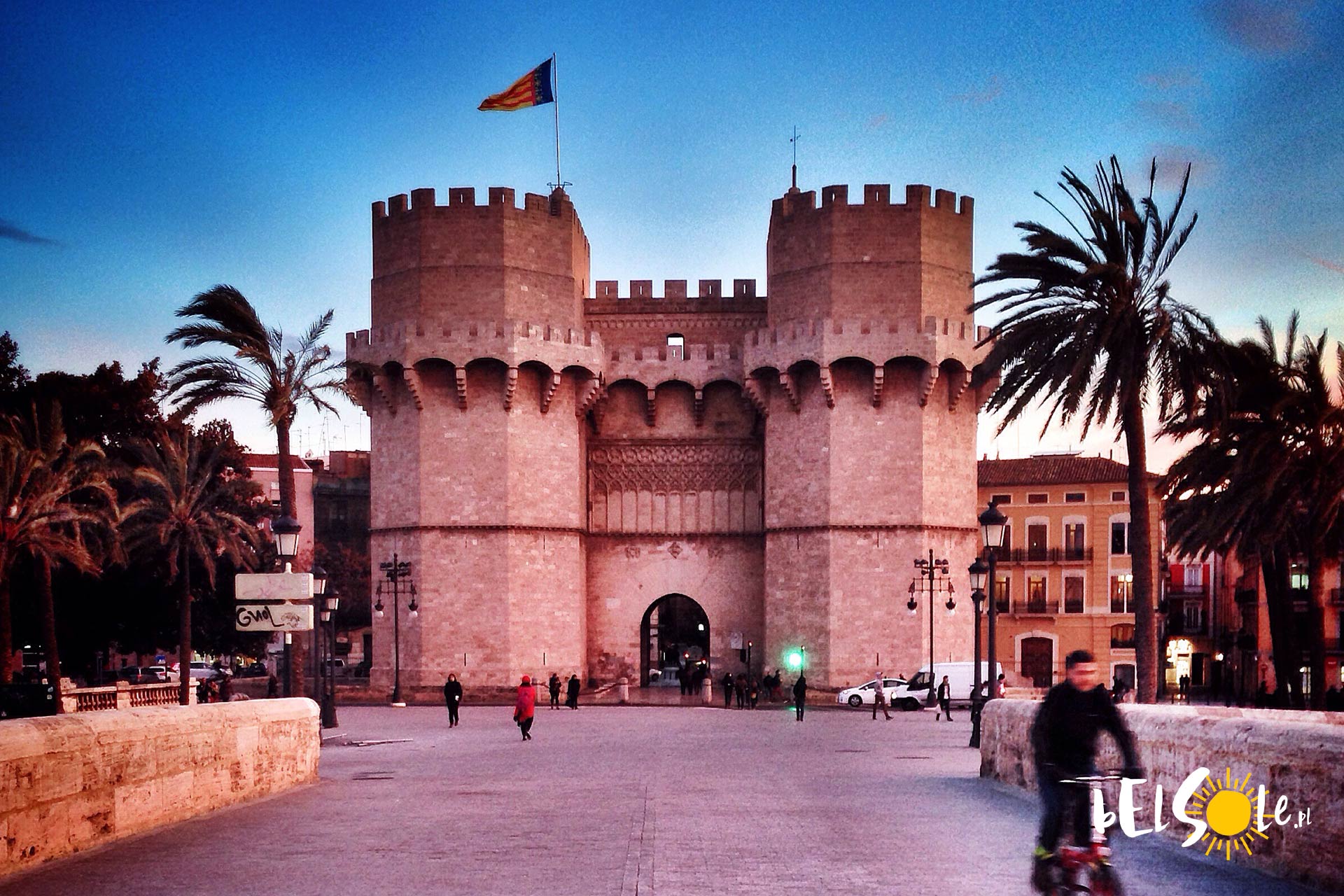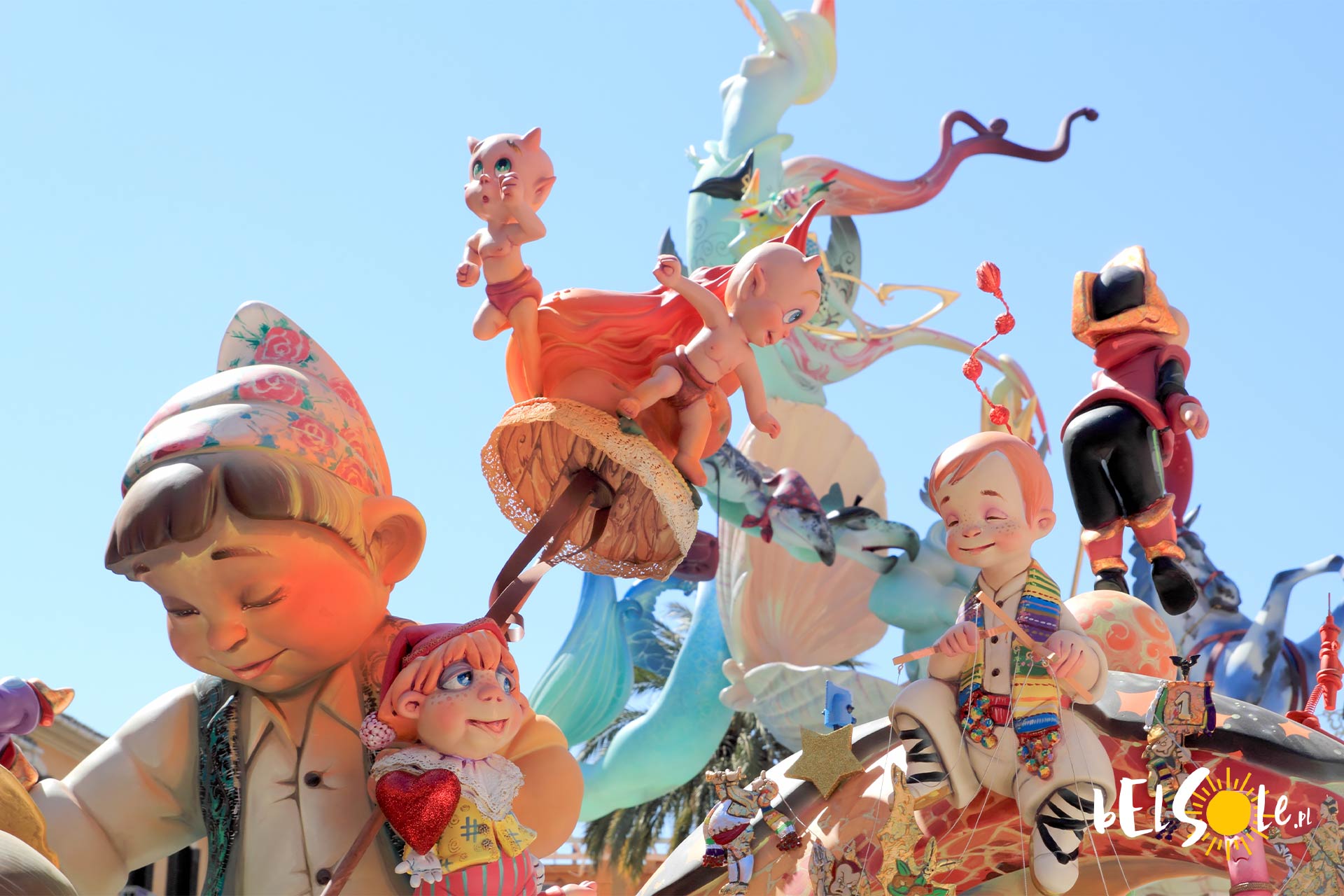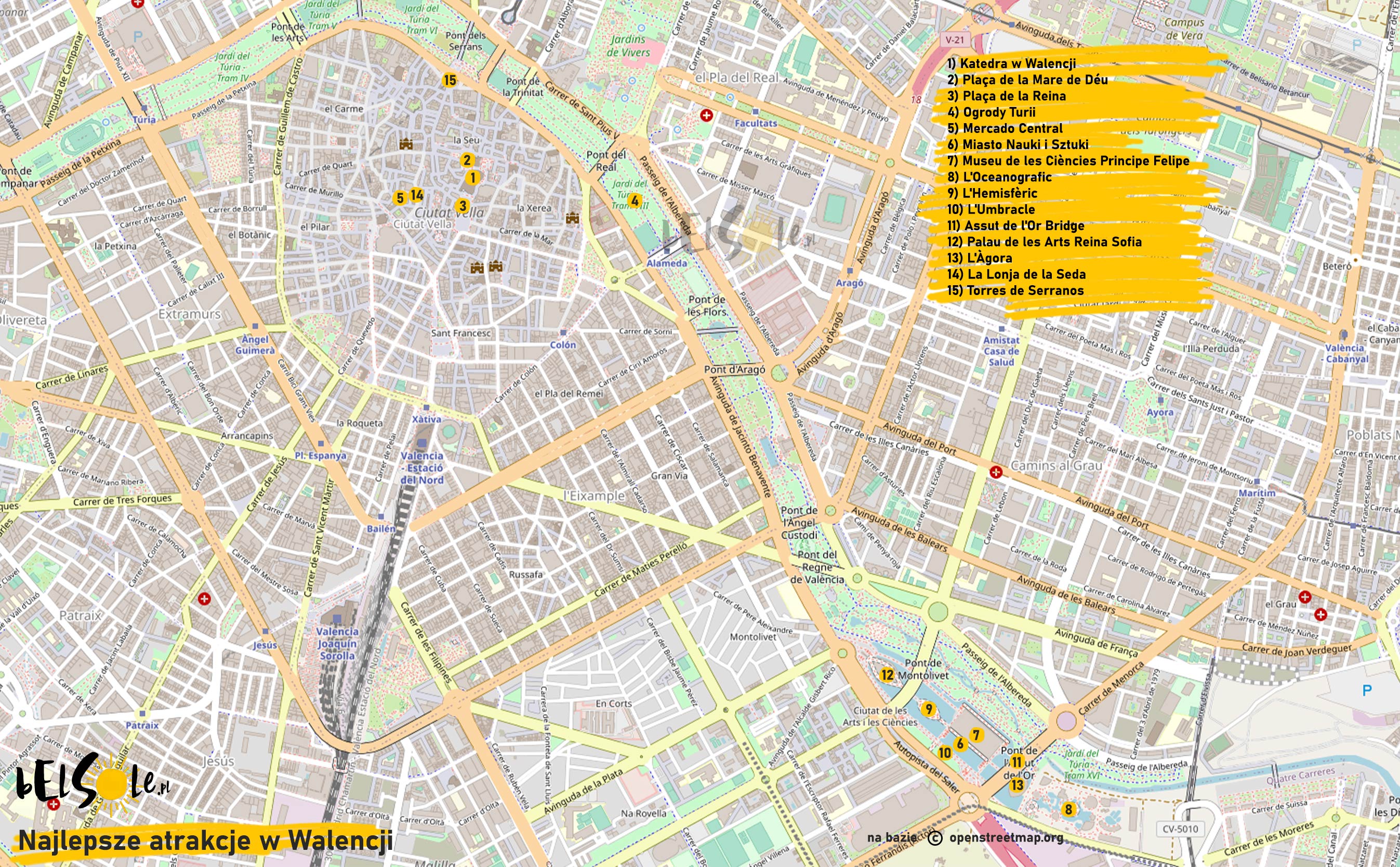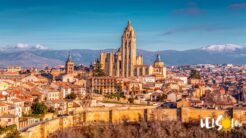Valencia is one of the most beautiful cities (and regions) in Spain, full of interesting little spots for you to discover. Are you wondering what to see in Valencia? What tourist attractions are worth a visit? We’ll go over all of that in today’s post, as we’ll guide you through the 17 best places to visit in Valencia.
Valencia
What to see in Valencia
We can organise the many notable spots in Valencia into two main concentrations: Valencia’s Old Town and the City of Arts and Sciences. Thankfully, both are connected by charming little streets and the Turia Gardens. You certainly don’t need a car in Valencia, you can get around quite easily on your own. Remember to book your tickets to your chosen places in advance though, as otherwise you won’t be able to get anywhere (because you’ll be stuck in queues forever). Another thing to mention about Valencia is its cuisine – you should certainly try the paella valenciana, the Horchata y Fartons or the Flan de Calabaza.
If you’re not sure how many days you’ll need in Valencia, here’s our recommendation.
And yes, as is essential in Spain, there are also beaches in Valencia for those of you who desire nothing more than a sun lounger and complete blessed peace.
Mercado Central
Valencia’s Market Hall
The Valencia Market Hall, built on 23 January 1928, is a must-see place in Valencia. It’s located right next to the Lonja de la Seda and the Iglesia de los Santos Juanes. The hall hosts many shops and stands selling all sorts of local products and souvenirs. You can find everything here from meat and spices to olives, snails (yes) and ceramics. It’s not just the products, though, but the atmosphere of a bustling lively market too.
Valencia Cathedral
La Seu de València
This is one unique building with many architectural styles added over the years. Before this church, there was a Roman temple here, then a mosque and then a Christian temple.
So we have Romanesque, Gothic, Baroque and Renaissance styles here. Note the ornate doorway, the Puerta del Palau, and the unique colonnades. Further, the octagonal tower of El Miguelete and the rosette above the door to the temple. Interestingly, Valencia Cathedral houses… a Holy Grail made of stone, which was supposedly the chalice used by Jesus for the Holy Eucharist or at the Last Supper.
You will also see many works of art in the cathedral, including those by Francisco Goya. Entrance to the cathedral costs €8, with an additional option to visit the El Miguelete tower with its beautiful view of Valencia costing €2.
From 1 April to 14 July, the cathedral is open from:
Monday to Friday, Saturdays and Sundays: 10 am to 7.30 pm.
In summer, from 15 July to 15 September:
Monday to Friday, Saturdays from 10 am to 7 pm and Sundays from 10 am to 12.10 pm and 2 pm to 7 pm.
In autumn and winter the cathedral is open from:
10:00am to 6:30pm Monday to Friday, from 10:00am to 7:00pm on Saturdays and from 10:00am to 1:00pm and 5:30pm to 7:00pm on Sundays.
Turia Gardens
Park in Turia
Turia Gardens is one of the largest parks in Spain. This park is almost 6 miles long and is situated along the former bed of the Turia River. The riverbed was originally altered to prevent flooding, yet now results in one of the most interesting parks in Europe.
You’ll find many paths, gardens, sports facilities, attractions and old bridges here. The Palau de la Música de València, the giant 70-metre Gulliver in Gulliver’s Park which you can climb, Cabecera Park, the old bridges of San Jose, Trinidad and Serranos – the places of interest are plentiful, and it is also an ideal park for a walk or a bike ride through the city. You can also walk from the centre all the way up to the City of Arts and Sciences through the gardens.
Plaça de la Mare de Déu
Valencia’s square
This is one of the three prettiest squares in Valencia. It is located right next to the Valencian Cathedral and the Basílica de la Mare de Déu dels Desemparats – in the middle of it is the Fountain del Turia, dedicated to Neptune. Eight naked women are gathered around Neptune, symbolising the irrigation of the city’s land by the Turia. Though you may be tempted by one of the nearby cafés and ice cream parlours, maybe skip out on ones on this square, as there are much better ones just a short walk away.
Plaça de la Reina
Valencia’s second square
This is the second of our recommended plazas in Valencia. You will find far better cafés and tapas here. This square is also adjacent to Valencia’s cathedral – it’s a good starting point for exploring the city, as it’s practically in the centre of Valencia.
Ciudad de las Artes y las Ciencias
The City of Arts and Sciences
You may have already encountered these two distinct buildings on Valencian postcards or online. It’s a cultural and architectural powerhouse, even recognised as one of the Twelve Treasures of Spain.
The complex was designed by Santiago Calatrava and Felix Candela. Construction began in 1996 and the last bit was completed in 2009. What buildings are in the City of Arts and Science? Here is what you can find:
- Museu de les Ciències Principe Felipe – science museum in the shape of a whale skeleton.
- L’Oceanografic – the largest oceanographic aquarium in Europe, the main building is shaped like a water lily
- L’Hemisfèric or the Eye of Knowledge – a planetarium and a laserium in the shape of an eye
- L’Umbracle, or the garden of art – serves as an entrance to the City of Arts and Sciences
- Assut de l’Or – a bridge over the former channel of the River Turia (the bridge pylon is more than 125 m tall)
- Palau de les Arts Reina Sofia – the opera house and a music centre
- L’Àgora – the last of the buildings to be built, which is a covered square and a venue created for concerts and events
Valencia’s Old Town
The centre of Valencia
On the other side of the City of Arts and Sciences is the centre of Valencia, a non-capitalised city of culture, art and architecture. Valencia’s Old Town is located in the Ciutat Vella, Extramurs and L’Eixample districts. You can find Valencia’s main attractions here, the main squares, the Cathedral, other churches, the Torres de Serranos and a part of the Turia park. It’s also a great place to grab churros with chocolate at Orxateria Santa Catalina (at Plaça de Santa Caterina 6)
La Lonja de la Seda
The Valencia Silk Exchange
Valencia in the 15th century was so rich that it needed a representative building to house a new trading hall. It was built in 1482-1533, and is a great example of the Valencian Gothic architecture and one of Valencia’s most important attractions. Pere Compte was responsible for its ornate halls and facades. The design of Llonja in Valencia referred to a similar Llonja building in Palma de Mallorca.
In 1996, the Silk Exchange was declared a UNESCO World Heritage Site.
Torres de Serranos
Valencia’s Gate (1/12)
This is one of the twelve gates surrounding the old city of Valencia. It is also one of Valencia’s best-preserved monuments. It was built in the Valencian Gothic style in 1392-1398.
For many years, the gate alongside the walls around it played an actual defensive role as well as being a treasury, a prison and even a triumphal arch. The gate itself can be climbed and offers a wonderful view of Valencia from the top.
Crida also takes place here during Fallas, the last Sunday of February.
Església de Sant Joan del Mercat
A church in Valencia
This is another greatly interesting place in Valencia. This Baroque building was built on the site of a mosque once located here – originally Gothic in style, it was then converted to Baroque after a fire tore through its construction. The main appeal of this small church is the rear façade with its clock and ornaments.
Las Fallas
Festival in Valencia
This is by far the most important festival among Valencians. Celebrated in March, the Feast of Saint Joseph is an important religious festival for the locals. The so-called ninots, ergo these little figures, are scattered around the whole city only to be burnt or even explode with firecrackers at the end of the festival.
Valencia also hosts many traditional events, concerts, exhibitions, parades and, of course, fireworks displays in this period. The main attractions of Las Fallas take place from 15 to 19 March, but some of them start as early as the end of February. The whole atmosphere of the festival does make March a great month to visit Valencia in.
The festival has been declared a part of UNESCO’s Intangible Cultural Heritage.
Where to stay in Valencia?
Accommodation in Valencia
It’s best to choose accommodation near the centre – you’ll pay around £70 for a double at the Plaza Centro in Valencia’s Old Town. If you’re looking for accommodation by the City of Arts and Sciences, you can find a double room in a four-star hotel for around £100.
Map of Valencia’s attractions
What to see in Valencia?
1) Valencia Cathedral
2) Plaça de la Mare de Déu
3) Plaça de la Reina
4) Turia Gardens
5) Mercado Central
6) City of Arts and Sciences
7) Museu de les Ciències Príncipe Felipe
8) L’Oceanografic
9) L’Hemisfèric
10) L’Umbracle
11) Assut de l’Or Bridge
12) Palau de les Arts Reina Sofia
13) L’Àgora
14) La Lonja de la Seda
15) Torres de Serranos
See also:


